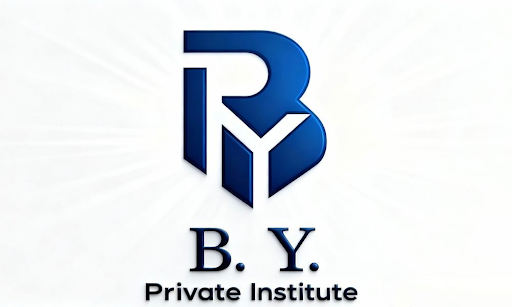Will Dogecoin Implement Lightning Network or Sidechains?
Dogecoin has seen a meteoric rise in popularity and price in 2021, going from a fringe cryptocurrency started as a joke to one of the top 10 cryptocurrencies by market capitalization. As Dogecoin continues to grow, there is much speculation around whether it will implement advanced scaling solutions like the Lightning Network or sidechains to allow it to scale for wider adoption.
What is Dogecoin?
Dogecoin started in 2013 as a fork of Litecoin by software engineers Billy Markus and Jackson Palmer, who wanted to create a fun cryptocurrency inspired by the popular Doge meme. Unlike Bitcoin, Dogecoin was designed to have a high supply and low price per coin to encourage everyday transactions. The Dogecoin community embraced the lighthearted nature of the coin, using it to fund charities and tip others on social media.
Despite its humble beginnings, Dogecoin has seen substantial growth recently. In early 2021, Dogecoin got caught up in the GameStop short squeeze saga when Reddit groups like r/WallStreetBets sought to pump up the price. Later in 2021, Dogecoin received endorsement from high-profile figures like Elon Musk, Mark Cuban, Snoop Dogg, and Gene Simmons, further boosting its popularity. This meteoric rise has led some to wonder whether Dogecoin can evolve beyond a meme currency.
Why Does Dogecoin Need Scaling Solutions?
As a payments-focused cryptocurrency, Dogecoin needs the ability to support a high throughput of transactions at low cost in order to scale. However, Dogecoin currently relies on the same proof-of-work consensus mechanism and blockchain structure as Bitcoin and Litecoin. This limits its transaction processing capacity to around 30 transactions per second (TPS), with relatively slow settlement times and high fees when demand spikes.
For perspective, Visa can handle around 1,700 TPS on average and up to 24,000 TPS at peak capacity. As Dogecoin gains more traction for payments, charities, and everyday transactions, it will need much higher scalability to support demand. Slow and expensive transactions could limit adoption for spending or tipping.
Scaling solutions like Lightning and sidechains would allow Dogecoin to handle many more transactions per second off-chain or on parallel chains, while leveraging the security of the main Dogecoin blockchain. This helps mitigate the "blockchain trilemma" tradeoff between decentralization, security, and scalability that plagues networks like Dogecoin.
What is the Lightning Network?
The Lightning Network is a "Layer 2" payments protocol that operates on top of blockchain networks like Bitcoin and Litecoin. It enables users to open payment channels between each other and send near-instant, low-cost payments without having to record every transaction directly on the underlying blockchain.
Payments on Lightning are routed between payment channels using a network of nodes, leveraging smart contract functionality to enable instant settlement off-chain. Once the channel is closed, only the final balances are recorded on the blockchain. This effectively lets Lightning handle an unlimited volume of transactions, supporting the scalability needs of a high-throughput payment coin like Dogecoin.
Litecoin, which Dogecoin is based on, already supports Lightning Network integration. Dogecoin developers would need to implement Lightning to enable similar fast, cheap payments. The Dogecoin Foundation has shown interest in Lightning Network support.
What are Sidechains?
Sidechains are separate blockchains that run in parallel to the main chain, allowing users to move assets between them. They can enable much higher transaction throughput for a main chain like Dogecoin by processing transactions on the sidechain, while still benefiting from the main chain's security.
For example, a Dogecoin sidechain could support thousands of low-cost transactions per second, while the Dogecoin main chain continues to handle consensus, issuance, and network security at a slower pace. Users get the best of both worlds - higher scalability without sacrificing decentralization.
Several major cryptocurrencies have implemented sidechain solutions, including Bitcoin (Liquid Network), Ethereum (Polygon), and TON Blockchain. Dogecoin could follow suit by developing its own sidechain tailored for high-throughput transactions. Sidechains require less of a protocol upgrade compared to Lightning, so could be easier for Dogecoin to implement in the near-term.
What is More Likely for Dogecoin?
At this stage, it appears more likely Dogecoin will pursue sidechain solutions rather than Lightning Network integration. Unlike Litecoin, Dogecoin would require its own unique implementation of Lightning, which is a more complex endeavor. Sidechains provide similar scaling benefits with less development overhead for the Dogecoin team.
However, Dogecoin's scalability needs may benefit from both sidechains and Lightning in the long run. A dual approach could enable cheap microtransactions via Lightning for activities like gaming and social media tipping, while sidechains facilitate higher throughput blockchain transactions.
The key is finding solutions that align with Dogecoin's community ethos of simplicity, accessibility, and convenience as a payments coin. As Elon Musk said, Dogecoin "encourages people to spend rather than hoard." Scalability improvements must serve that goal.
“The greatness of a community is most accurately measured by the compassionate actions of its members." – Coretta Scott King
- Dogecoin was initially created as a "joke" cryptocurrency but has evolved into so much more, building an amazing and compassionate community along the way.
Will Improved Scalability Bring Dogecoin Mainstream Adoption?
Dogecoin's grassroots community and friendly image have fueled its rise to a top 10 cryptocurrency by market cap. However, scaling limitations could hinder mainstream adoption as a spending and tipping currency. By implementing solutions like sidechains, can Dogecoin build enough capacity to handle mass usage?
How Does Dogecoin's Development Compare to Other Major Cryptocurrencies?
Unlike many other top cryptocurrencies, Dogecoin lacks a well-funded company or organization to directly support its development. With volunteer developers relying on community donations, how can Dogecoin keep pace innovating? Does it risk falling behind Bitcoin, Ethereum, and other networks rolling out major upgrades?
In conclusion, Dogecoin faces interesting challenges and opportunities as it evolves beyond its meme-currency origins. Implementing scaling solutions could enable Dogecoin to live up to its billing as the "future of currency" by Elon Musk. However, it will require balancing the needs of Dogecoin's growing ecosystem with its grassroots community ethos. Striking this balance will shape the next phase of Dogecoin's quest for mainstream adoption.




